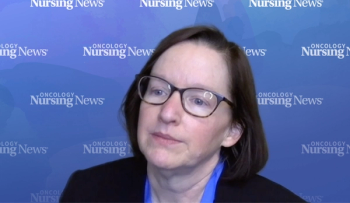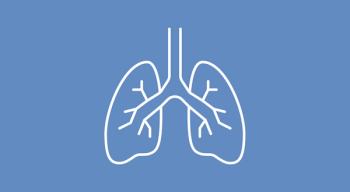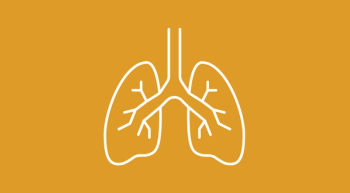
A subgroup analysis of the TRANSCEND NHL 001 trial demonstrated that liso-cel may be more effective in earlier lines of treatment for patients with mantle cell lymphoma.

A subgroup analysis of the TRANSCEND NHL 001 trial demonstrated that liso-cel may be more effective in earlier lines of treatment for patients with mantle cell lymphoma.

Patients with relapsed/refractory multiple myeloma who also had a lower tumor burden were more likely to derive deeper responses to idecabtagene vicleucel.

Patient-provider conversations are vital to promote the best care for chronic myeloid leukemia, a patient advocate said.

Compared with fulvestrant alone, abemaciclib plus fulvestrant improved progression-free survival in select patients with hormone receptor–positive/HER2-negative advanced breast cancer.

Patients with advanced renal cell carcinoma with previous exposure to lenvatinib derived modest benefit with tyrosine kinase inhibitors.

Adding darolutamide to androgen deprivation therapy and docetaxel delayed the progression from metastatic hormone-sensitive prostate cancer to metastatic castration-resistant disease.

Patients with HER2-positive early breast cancer derived similar outcomes whether they received subcutaneous or intravenous pertuzumab and trastuzumab plus chemo.

Patients treated with enfortumab vedotin before sacituzumab govitecan had low objective response rates and median PFS, which may raise questions about this sequencing approach.

Rates of MRD negativity increased with daratumumab plus VRd in newly diagnosed, transplant-eligible multiple myeloma.

Oral azacitidine had a similar safety profile across the 200-mg and 300-mg groups in lower- to intermediate-risk MDS.

Patients with biochemically recurrent nonmetastatic hormone-sensitive prostate cancer who are responding well to an enzalutamide regimen may be able to stop treatment with an impact to their quality of life.

Patients with recurrent ovarian cancer did not derive a benefit from adding atezolizumab to chemotherapy and bevacizumab.

Tucidinostat plus R-CHOP was safe and effective for previously untreated diffuse large B-cell lymphoma expressing MYC and BCL-2.

These data may support belantamab mafodotin, bortezomib, and dexamethasone as a new standard of care for patients with relapsed/refractory multiple myeloma.

An apalutamide-based androgen blockade regimen may improve PSA progression-free survival without a negative impact on quality of life in patients with recurrent prostate cancer.

Findings from this safety run-in cohort of teclistamab, daratumumab, and lenalidomide in newly diagnosed multiple myeloma will steer how randomization of the MajesTEC-7 trial will commence.

Adding inavolisib to palbociclib and fulvestrant improved results for HER2-negative, hormone receptor–positive, PIK3CA-mutated advanced or metastatic breast cancer.

Adagrasib, compared with standard-of-care chemotherapy, significantly improved tumor responses and progression-free survival in patients with KRASG12C-mutated locally advanced or metastatic NSCLC.

Talquetamab treatment was safe and efficacious for patients with relapsed or refractory multiple myeloma, including those with comorbidities and poor functional status.

Patients with MammaPrint high-2–risk, BluePrint Luminal B, HR-positive, HER2-negative breast cancer had improved recurrence-free survival when treated with anthracycline/taxane/cyclophosphamide.

Patients with HR-positive, HER2-low, and -ultralow metastatic breast cancer treated with trastuzumab deruxtecan obtained a PFS benefit vs chemotherapy.

Patients with advanced non-small cell lung cancer who received palliative care via telehealth had similar improvements in quality of life as those who received the care through in-person visits.

Perioperative chemotherapy with FLOT improved overall survival in patients with resectable esophageal cancer compared with neoadjuvant chemoradiation with CROSS.

The combination given before lymph node dissection and response-driven adjuvant therapy reduced the risk for recurrence, progression, or death in stage III melanoma.

Adding retroperitoneal lymphadenectomy to cytoreductive surgery did not improve survival in advanced ovarian cancer.

Triplet therapies containing belantamab mafodotin, pomalidomide, and dexamethasone may address an unmet need for relapsed/refractory multiple myeloma.

The survival benefit obtained from consolidation treatment with durvalumab after concurrent chemoradiation may change the standard of care for limited-stage small cell lung cancer.

Compared with placebo, osimertinib after definitive chemoradiotherapy improved progression-free survival in locally advanced, EGFR-mutated non–small cell lung cancer.

Patients with refractory EGFR-mutated, advanced non-small lung cancer had improved responses with low rates of adverse effects with subcutaneous amivantamab vs its intravenous formulation.

Updated data from the MANIFEST-2 study support a paradigm shift in the treatment of JAK inhibitor–naive patients with myelofibrosis.